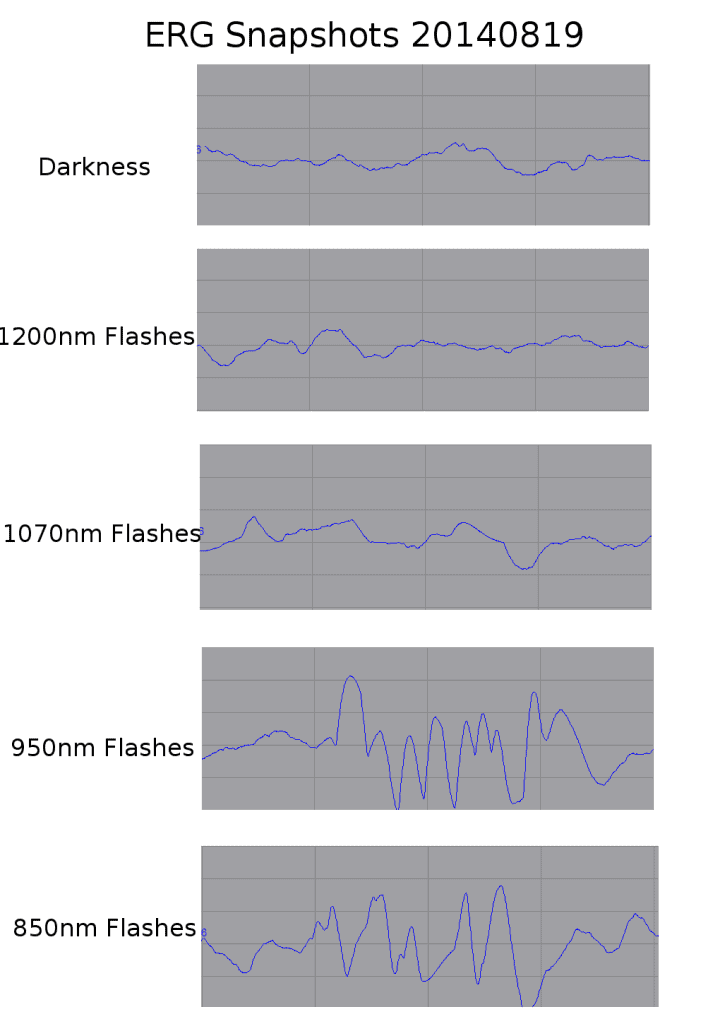It always baffles me how some groups manage to make stunning discoveries with incredibly low budgets. Now, a team working with a budget of $4,000 were able to extend the human vision towards the near infrared.
2 weeks into the A2 administration and we have ERG readings with excitation in the eye at 950nm :) This is really exciting news. We’re hoping that by the next few weeks, we will move even further into the NIR.
However, the results haven’t been published in a scientific, peer reviewed journal. But they did release their results, and a discussion based on them. The info is pretty noisy, but the device they are using is very sensitive, and this is the source of the noise. According to the team, they are working on setting up a meeting with an ophthalmologist by the end of the study so they can get a more clear reading.
As you can see, there is a lot of artifact noise, even in the dark. However, due to the irregularity and low amplitude of it, it will be easy to filter out. If you remember, the 850nm was a flash that we could see even before the dietary shifts. However, you can clearly see that the 950nm flashes are now visible to this subject.
We noticed that each reading at the 950nm level has a double peak. We believe that this is due to depolarization-depolarization activity, but that is conjecture.
We’re going to continue taking readings and work on filtering out the noise so that we can have the best data possible. Also, now that we have some hard data, we feel comfortable adding a little anecdotal recordings from the test journals.
Thank you for sticking with us, it’s all panning out now. I hope you guys are excited as we are










